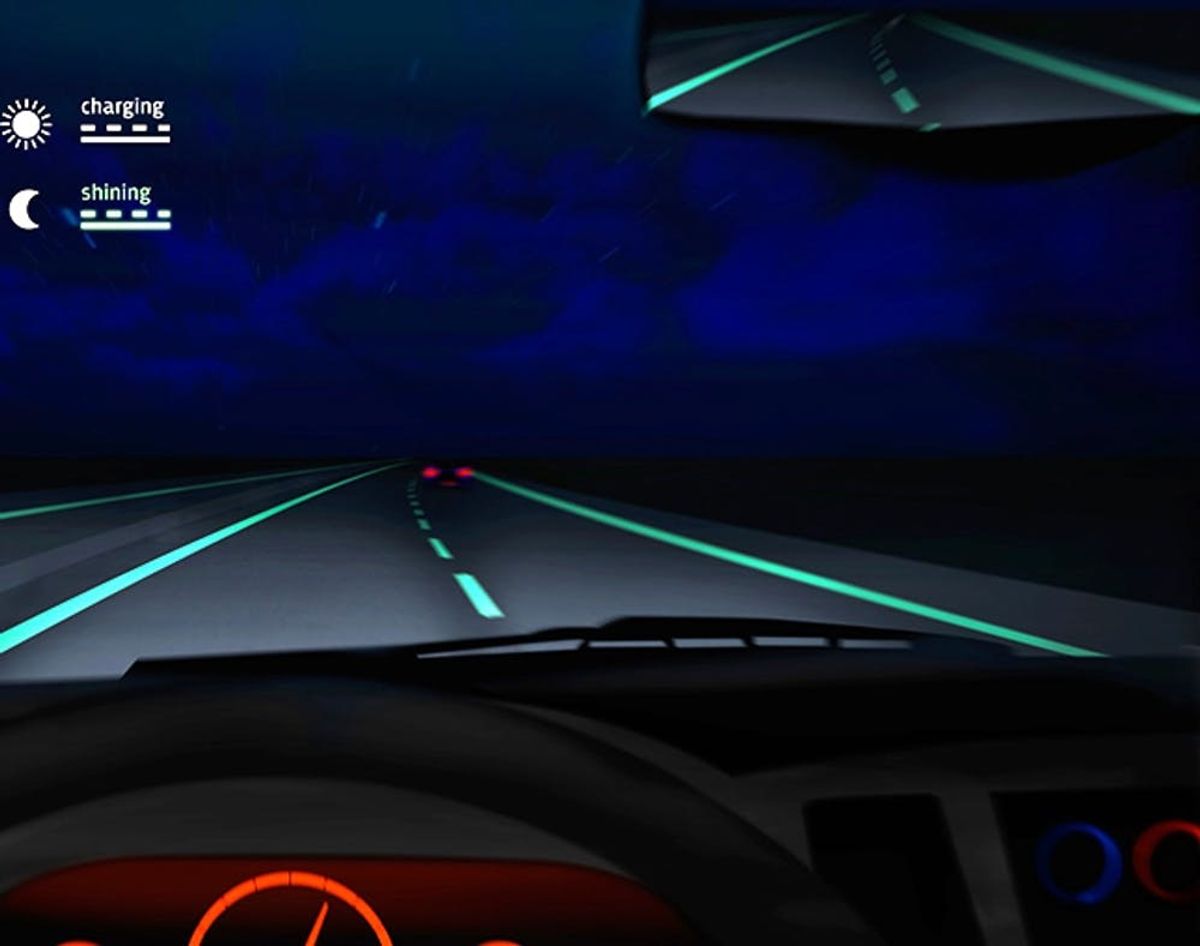In place of streetlights, light-absorbing, glow-in-the-dark markings are illuminating the roads for night riders on a 500 meter strip in the Netherlands. Reporters say rolling down at night feels like driving in a fairytale — but these smart highways are real and hoping to pave the way for the new roads of the future. Where else are our smart cars supposed to drive?
Will Our Future Highways Glow in the Dark?

In place of streetlights, light-absorbing, glow-in-the-dark markings are illuminating the road for night riders on a 500 meter strip in the Netherlands. Dutch reporters say rolling down them in the dark feels like driving in a fairytale — but the first smart highways are real and hoping to pave the way for the new roads of the future. What else would we expect our smart cars to drive on?
Social design lab Studio Roosegaarde started working on the concept a couple years ago. They wanted to bring technology and design to something we use every day in a way that is both beautiful and practical. We get it — they felt like, hey, we spend millions toward things we use every day (like roads) and we don’t care what they look like or what they do for us. They just broke ground on the first iteration of their “Smart Highway,” a project that hopes to change all that.
Een laatste blik op een pracht innovatie pic.twitter.com/DQTsFQZxR8
— Maxime Verhagen (@MaximeVerhagen) April 10, 2014
A photo-luminescent powder mixed with road paint creates markings that charge up from the sun’s rays during the day to light up the roads by night. The above is an actual picture of the highway’s radioactive-looking strip Tweeted by the Netherlands’ Deputy Prime Minister Maxime Verhagen. Are we crazy, or could this be a cool project to try at home in your driveway, walkway or garden? Our gears are turning.
Glow-in-the-dark markings illuminate a road that in a much more energy-efficient way than street lamps do, but it’s only skimming the surface of “smart.” Roosegaarde pictures future versions of the highway that use dynamic paint to display weather markings. Snowflakes on the pavement will alert drivers when the temperature drops or if it starts to snow. This would add light to the roads and give drivers who might come across black ice in dropping temps a heads up.
Energy-efficient smart highways would feature eco-friendly interactive lights that illuminate only when they sense a car is nearing.
Here, light is created on the sides of the road by wind drummed up with mini pinwheel-like windmills.
Similar to updated versions of carpool lanes, the roads also feature priority lanes for electric vehicles to incentivize consumers to go green when they go to buy their next car. Studio Roosegaarde is still looking for organizations to extend the glow-in-the-dark highway and turn the above concepts into realities. They’re also fighting to simply find cities that will allow them the space needed for this type of exploration and public problem-solving. ‘Til then, they’re keeping busy — their next headline-making project is a vacuum cleaner for the air, a smog-attracting electrostatic field that sucks the smog out of Beijing’s skies.
How do you think this would change your city? What is the coolest tech-meets-design element of where you live?
(h/t: Wired)



















